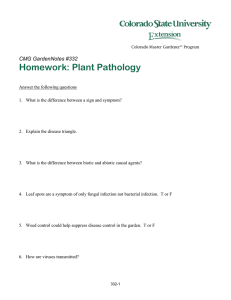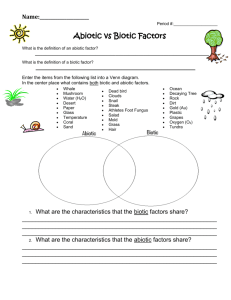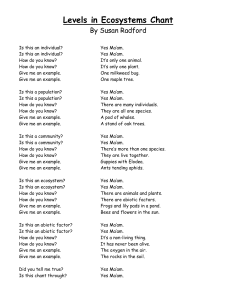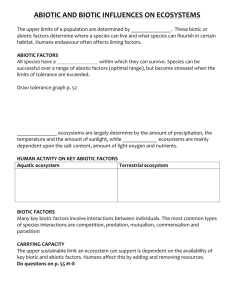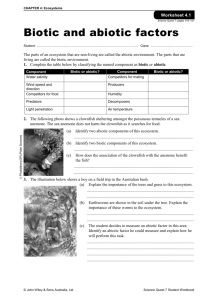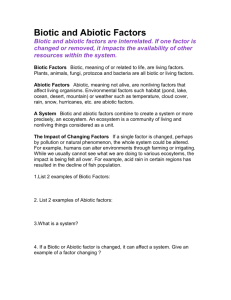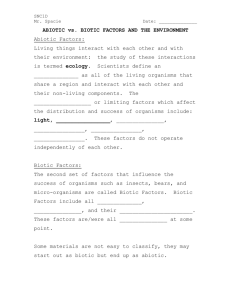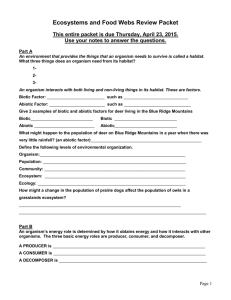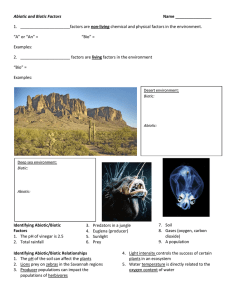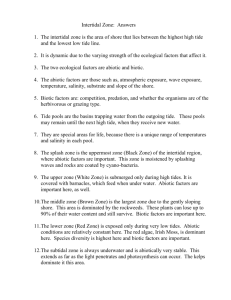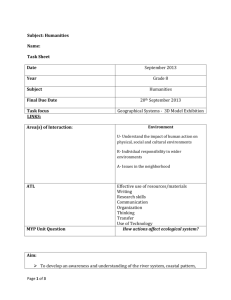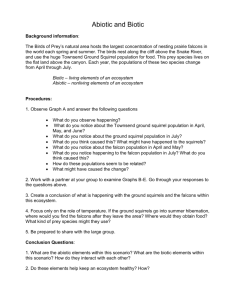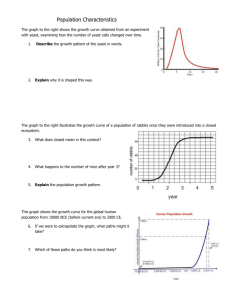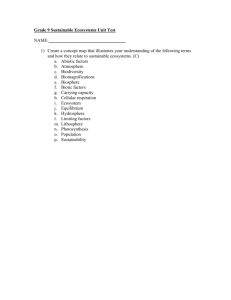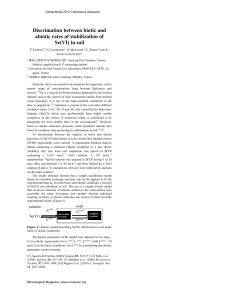Comparing Abiotic and Biotic Factors
advertisement
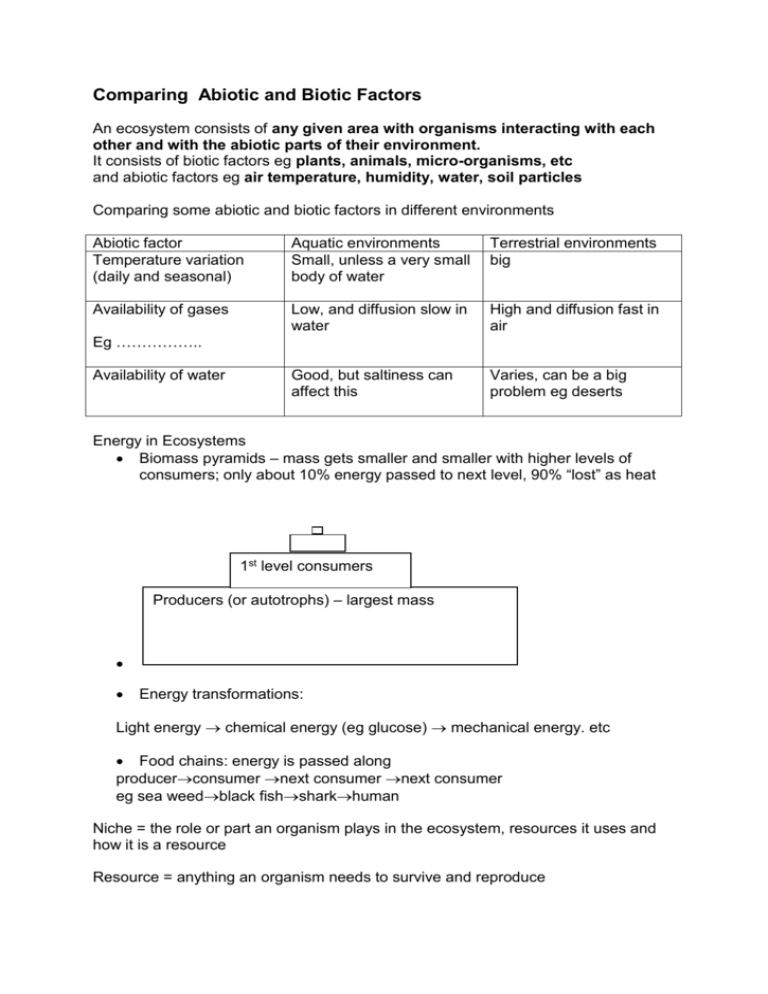
Comparing Abiotic and Biotic Factors An ecosystem consists of any given area with organisms interacting with each other and with the abiotic parts of their environment. It consists of biotic factors eg plants, animals, micro-organisms, etc and abiotic factors eg air temperature, humidity, water, soil particles Comparing some abiotic and biotic factors in different environments Abiotic factor Temperature variation (daily and seasonal) Aquatic environments Small, unless a very small body of water Terrestrial environments big Availability of gases Low, and diffusion slow in water High and diffusion fast in air Good, but saltiness can affect this Varies, can be a big problem eg deserts Eg …………….. Availability of water Energy in Ecosystems Biomass pyramids – mass gets smaller and smaller with higher levels of consumers; only about 10% energy passed to next level, 90% “lost” as heat 1st level consumers Producers (or autotrophs) – largest mass Energy transformations: Light energy chemical energy (eg glucose) mechanical energy. etc Food chains: energy is passed along producerconsumer next consumer next consumer eg sea weedblack fishsharkhuman Niche = the role or part an organism plays in the ecosystem, resources it uses and how it is a resource Resource = anything an organism needs to survive and reproduce
